The acquisition of new vocabulary is essential in terms of overall language advancement. However, there is always a need to review active words from time to time in order to use them fluently in speech. Here, we will present a couple of great vocabulary revision games which will perk up every classroom. Through these games the learners will feel how fun, entertaining and effective the learning process can be.
1. Charades
Charades is a fun and cool revision game. Students need to practice their acting skills to explain the words. This game is extremely easy to organize with minimal advance preparation. The only thing to be ready for is to keep a collection of vocabulary cards for the words you have studied.
The class is divided into two teams. Each team member takes turns acting out one of the words from the vocabulary set and explains it by acting out the word. If his or her own team can’t guess the word, the opposite team gets the chance to guess it. Each right answer equals one point.
Skyeng ищет преподавателей английского. Подробности по ссылке: Skyeng
2. Pictionary
Pictionary is also an entertaining game to play for vocabulary review. The rules are similar to those of charades except that instead of acting out the word, it is drawn on the board.
3. Bingo
Bingo can serve as a good revision game. From my experience, most of the groups/students like playing bingo because it gives them the chance to reflect on the words they have digested.
Students are given a blank bingo board and are asked to put the review words into the squares randomly. The teacher puts the active words in a hat or a box, takes them out one by one and defines them. If the student has a word corresponding to the definition, he crosses it out on his bingo board. When someone gets five squares in a row, they should shout, “Bingo!”
Check these articles out as well:
4. A memory style
A memory style card game can be another effective way for reviewing vocabulary. It requires some preparation before the game starts. For each word to be reviewed, one card should have the target vocabulary word and another card should have the definition of the word. You also need to have a big playing grid where you put the words and their definitions face down.
Each person turns over two cards each turn trying to find a match. If the cards do not match, he turns them over again and the next person tries to find a match. If he succeeds, he keeps the cards and gets an additional turn. The player with the highest number of cards at the end of the game wins.
The game can be modified even further. If you have accumulated enough synonyms or antonyms to the target vocabulary, you can practice matching target words to their antonyms or synonyms.
5. Categories
Categories is another awesome revision game which will make students energized and empowered. What they need for the game is to draw 4-6 columns on their paper and write a category at the top of each column. Categories fit the topics covered during the course. For example, if you have covered the business topics of Marketing, Work and Leisure, Ethics, Human Resources, Travel, you write these topics as categories.
You time the students and ask them to write as many words as possible under each category. As a further modification, choose a random letter and write it on the board. Give students enough time to write down a word for each category that starts with that letter.
Экономьте время на подготовку к урокам и проверку домашних заданий со Skyeng. Удаленный формат занятий, защита от внезапных отмен и график, который настроен специально под вас. Присоединяйтесь к нашей команде. Подробности по ссылке: Skyeng
6. Letter scramble
Letter scramble will make students really competitive and super fast. What you need is to take a list of words that your students have recently learned and write a scrambled version of each on the board. Students need to unscramble the words on their paper. The first one to finish deciphering all the words wins.
7. Stop the bus
Stop the bus is a cool game my students adore. I usually divide the class into 2-3 teams. One student from each team. This student sits on a chair facing his peers. Then from behind the student in the hot seat, show the other students a word from the lesson. The other students must try to describe what the word is without saying the actual word. And the student in the hot seat must guess.
The student who guesses the word shouts out “stop the bus” and checks the word with the teacher. If correct, the team gets a point. If wrong, other teams have the chance to guess the word by writing their versions on a piece of paper and passing the papers to the teacher.
8. Puzzles
Puzzles is another cool and easy tool to review the material in an effective way. What I like about this way of vocabulary revision is that students can work in pairs or groups while trying to find words matching the definition in the crosswords. They learn by listening to each other, cooperating to find the right answer. In this way, they both review the material and improve their teamwork skills.
Follow this link to get templates of different types of puzzles.
We also recommend watching a video with Alexei Konobeev. The speaker shared games to help your students remember new vocabulary. These games do not require special training and you can adapt them to any age and level.
We hope that all these games would serve their best to liven your vocabulary revision sessions and make them more meaningful and effective.
Which of these games have you tried? Which ones have you picked up for your next revision slot?

Want a fresh, new ESL teaching tool that isn’t a total gamble?
Deal your students a winning hand with card games.
All you need for these awesome in-class activities are some cards.
That means they’re simple, flexible and cost-efficient.
As the teacher, you get to make up the rules. Since they’re easily customized, you can play around with all kinds of variations on classic card games. You’ll hold teaching tools for whatever vocabulary or grammar point you’re working on in class.
Teaching them card games not only builds language, but it also builds cultural knowledge. From elementary schools and retirement homes to casinos and college parties, card game are an important part of our culture. Wherever you go in the world, you’re bound to find some regionally-popular card games.
The card games we’ve assembled here are not only timeless, international favorites, but they’re also perfect teaching tools for an ESL classroom.
Download:
This blog post is available as a convenient and portable PDF that you
can take anywhere.
Click here to get a copy. (Download)
Why Are ESL Card Games Legitimate Teaching Tools?
Never underestimate the power of being different or exciting.
Used correctly, games in the ESL classroom will enrich your lessons.
But how?
Make things fun and engaging for everyone
ESL games perk up your class’s interest and provide a mental break from stressful studying. They can trick the most apathetic students into learning something new. Games reinforce the idea that the classroom is a fun place, and that learning English is a fun activity. For another source of fun, interactive learning, you’ve got to try FluentU.
FluentU takes authentic videos—like music videos, movie trailers, news and inspiring talks—and turns them into personalized language lessons.
Reduce teacher talking time
You should always be on the lookout for new activities that will minimize the time you spend talking and shine that spotlight on your students. They’re not in class to just listen to lectures, they’re in class to practice their English as much as humanly possible.
By introducing them to some card games, you’ll provide your students with a way to practice English among themselves and try out their newly-learned grammar and vocabulary.
Build relationships
The student-teacher relationship, as well as the peer relationships between members of the class, can be greatly strengthened by having everyone laughing together.
Teach and reinforce material
Games involve repetitive actions. Students will repeat the same actions and English phrases over and over again, ingraining this in their memories for the long-term. For instance, when playing “Go Fish,” students will need to ask questions using the same sentence many, many times.
By the end of a few rounds, it will be second nature to say “Do you have any…?” You can use this characteristic of games to your advantage, and use them to teach the most difficult vocabulary and grammar concepts.
Let students take ownership of English
Games help students realize that they’re not just learning English for the sake of learning English. Games teach them that there’s more to the English language than just, “Hello, my name is…”
It’s not something boring and dry that they’re simply “supposed” to learn. Your students will come to understand that they’ll be able to have fun and play around with the English language the same way they do with their native language.
Encourage creative thinking
Many of these games involve students having to spell words, identify the right vocabulary and come up with their own sentences for gameplay. This means that they’ll need to get the gears in their brains spinning and be creative with the English they already know. Plus, since games are fun, their brains will decide that making up new English sentences is fun, too!
An ESL Teacher’s Motivations Determine a Game’s Success
I taught hundreds of middle school students while living in South Korea. In the beginning, I used games because I was scared to death of being boring. As a result, I was under constant pressure to be exciting, and I doubt my students learned much.
Eventually I let go of perfection. I used ESL games as a teaching tool, and my classes improved enormously.
Your own classes will suffer if you use games:
- as time for you to take a break
- because you didn’t know what else to do
- to prove to your students that you are incredibly interesting
If you use ESL card games for the right reasons, the energy in your classes will increase. The teaching relationship between you and your students will also be strengthened.
7 ESL Card Games You’ve Gotta Have Up Your Sleeve
1. Spoons
This hilarious card game translates into effective ESL spelling practice for all levels and ages.
It works best for smaller groups of 4 or 5 students. Things tend to get pretty crazy with big groups, but it can be done.
Be forewarned, the cards require a lot of preparation in advance. However, if you make them correctly and have them laminated, they’ll last a long time.
Preparation
In a Word document, create a table. Each square in the table should be about 2 inches by 2 inches. These are your game cards! Type up the alphabet, with one letter per square. Create about 20-25 squares for each letter of the alphabet. Print the document (laminate if you can) and cut the tables into the game cards.
These same cards can be used for a homemade Scrabble game, as well.
How to Play
Choose about 10 vocabulary words and write them on the board where everyone can see them. Dump the cards face up in the middle of the table or desks. Then put plastic spoons or unsharpened pencils in the center.
The quantity of these is important, through—there must be one less than the number of students playing. For example, if there are five students, put out only four spoons or pencils.
The students will each spell the same word from the board by choosing letters from the pile. When one student finishes, he/she takes a spoon. As soon as that happens, the other students must take a spoon also. The student who does not get a spoon writes “S” on a piece of paper (or “P” for “pencil”). Whoever spells “Spoons” or “Pencil” first loses.
2. Memory
One reason this game is so popular is that everyone enjoys the challenge it poses.
It’s another ESL game that transcends all levels and abilities.
Preparation
Create paper cards with key vocabulary words on them.
You’ll want to create a grid of at least 7 by 7 (49 cards) for small groups of intermediate and advanced students, and can make significantly larger grids for more advanced students and larger groups of students. Teeny tiny grids of cards (think 4 by 4, 16 cards) can be made up for young children and beginning students.
You don’t just have to limit yourself to vocabulary words, either. You can use pictures, numbers or colors for young and beginning level students. You can also kick the difficulty up a few notches and provide matching verb conjugations.
How to Play
On your turn, you can select any two cards to flip over. If they are a pair, you can keep the cards and go again. If not, turn the cards back over in their original spot, and your turn is over.
There are a variety of ways to play Memory, depending on your classroom’s technology.
1. Place the cards at the students’ desks.
No matter the students’ ages, it’s best to laminate the cards. Otherwise they become dog-eared and torn up very quickly.
2. Put the cards on the board with magnets or small pieces of tape.
Be especially careful that the tape won’t damage the board. If possible, have the cards hung before class starts to save valuable time. Young students become very antsy and disruptive when they have to wait.
3. Create a PowerPoint game.
For the tech-savvy, you can create a PowerPoint with numbers in the squares, or find a free template online. The students first choose a number. A word or picture is revealed which then disappears. The students choose another number, trying to find a match.
3. Go Fish
This old favorite is for beginning level students and never fails to get everyone talking.
Preparation
You can either use a traditional deck of cards and focus on structuring questions and identifying numbers, or you can make up your own set of illustrated cards for key vocabulary. In Korea, the students’ textbooks usually would have pre-made flashcards in the back of the book that students punched out. These were perfect for Go Fish when they were numerous.
How to Play
Divide students into small groups of 4-6. Deal out 5-7 cards per students, and then dump the rest of the cards face down in the center. Mix them up well!
You know the drill from here on out: First students lay down any matches they have in their hands. Then students will go around in a circle asking each other if they have a match for their particular vocabulary words or numbers. If the other student has a match, he or she has to pass it over to the questioner.
The successful questioner can keep asking for matching cards until they finally get told to “Go fish!” The goal is to have no cards left in your hand, because you’ve laid down matches. With traditional playing cards you’ll need to get all four numbers (one in every suit) to lay down a set. With vocabulary, it’s up to you to decide how many makes a full set, though pairs work well for younger students.
The matching cards get set aside into a pile. At the end of the game, the student who finished their hand first may be the winner—but the ultimate winner will have the most matching sets of cards in their pile.
It’s great for practicing questions, answers and easy vocabulary, like:
Do you have _______________? (a fish, book, house, etc.)
Yes, I do./No, I don’t. Can you give me a ____________? (pencil, dress, spoon, etc.)
Yes, I can (give it to you).
No, I can’t (give it to you).
Sorry, go fish!
Feel free to be creative and adjust the asking phrases to match your key vocabulary. For example, my sixth graders had a unit where the target phrase was “How do you say ~ in Korean/English?” We used their textbook’s flashcards to play Go Fish, but instead of “Do you have ~,” they would ask, “How do you say ‘apple’ in Korean?” If the student had the corresponding flashcard with the Korean word for “apple,” it was a match.
As always, be sure to laminate your cards if you can, or you’ll be remaking them in no time. It’s a good idea to glue words or pictures on to darker paper so that fellow competitors can’t see through the cards.
4. Uno
No, no. Despite the name, this game isn’t for teaching Spanish. It’s actually perfect for teaching your ESL students colors, numbers and a few basic phrases here and there.
This beloved game was a strong presence in many of our childhoods, and it’s so darn popular because it’s simple.
How to Play
Deal seven cards to each student in the playing group. Place the deck in the center and flip one card over to create the discard pile. Students will then take turns playing the cards in their hand on the discard deck.
In case you’re a bit out of touch with your inner child and need some refreshing on the rules, the student who’s actively playing their turn must match the last discarded card’s number, color or command.
For instance, a red 8 can be played on any other red card, a blue “draw two” may be played on any other blue card, and any color “draw two” can be played on any color “draw two.” Black cards can be played at any time!
Because the card matching is super visually-oriented, it’s even easy for beginning English students to pick up on. Now, how do they practice their English with this game? Have the playing student speak the number, color and command (if applicable) of each card out loud while they play it. This will help them practice identifying colors and numbers quickly and naturally.
When a student gets down to one single card, have them shout “One card!” instead of “Uno!” if you like. The winner is the student who gets rid of all their cards first.
5. Kings
Some of you might recognize this one as a drinking game (also known as “Circle of Death,” though we highly recommend sticking with the “Kings” name). I won’t try to slip that one past you. It is! But you can rework this classic party-night game to be an excellent, engaging and activity-driven game for in-class English practice. It’s also wonderful for getting the “wiggles” out of your more energetic classrooms.
Preparation
Create a sheet of rules for the game. You’ll need to assign a different action to every number in the deck (Ace through King). These rules can be created with the input of your students before gameplay starts, or you can make it up ahead of time at home.
Not sure what kind of rules to make? To get your creative juices flowing, here’s one set of rules you could use.
How to Play
The students simply go around in a circle drawing one card on their turn, and then everyone does the activities corresponding to the selected card. Students can keep the list nearby for reference, or you may elect one student to be a “rule keeper” and have them read off what every student must do.
This works on the students’ English comprehension skills, because they’ll need to either read or hear the action and respond accordingly. Those who cannot perform the actions sit out the round, and the winners are the ones who can jump through the hoops until the deck runs out!
6. Dictatorship
This one is all gameplay, no preparation. Just get yourself a deck of traditional playing cards, explain the rules and you’re good to go!
For this one you’ll want to break larger classes into smaller groups. Each group needs its own deck.
How to Play
To play, everyone draws a card, and the highest valued card is the “dictator” for that round. Feel free to call them the “president,” “leader,” “commander” or any other term that suits your fancy if dictator is too harsh or complex.
Whatever you decide, this student officially gets to call the shots for one round. They’ll decide on a couple of fun “rules” that the rest will have to follow depending on the cards they draw. For example: “Everyone with a red card has to dance salsa for five seconds” or “Everyone with a diamond has to jump up and down.”
You can provide them with a list of possible actions if they’re still in the process of learning action verbs and activities like these. Definitely write the sentence structures they’ll need on the board to command their fellow classmates.
After determining the actions everyone will need to do, the dictator will then deal out the cards in a circle. Once the cards are out and everyone has followed orders, reshuffle the deck and pass it to the next student on the dictator’s left (or right). Go around in a circle until everyone has had a chance to be the boss!
One little tip: Give the dictator a limit for how many “rules” they can impose on their subjects for each round—otherwise things might get out of hand. I’d suggest no more than 2-3 rules per round. For lower levels, just one rule will suffice because the other students playing might forget what they’re supposed to do while waiting for the cards to be dealt!
If you’re in the mood for some silly and boundless fun at the end of a class period? Let them command to their heart’s content.
7. Cards Against Humanity
Perfect for adult students, advanced students and only somewhat appropriate in a (very) casual learning environment. You probably won’t want to bring this one into school—and you’ll definitely need to get an “okay” from a higher-up depending on where you teach ESL.
There are a few ways to modify this game and make it school-friendly, so stay with me here.
Preparation
For the unanointed, this is not your grandma’s card game. It’s full of deliciously explicit language, offensive statements and other content that is absolutely not politically correct. How the heck is this great for ESL, you’re wondering?
If you can get away with the official Cards Against Humanity decks, it’s just awesome for helping adult and advanced students to learn more about popular culture, puns, black humor (which is honestly quite a lot of American and British humor) and well-known people and events in the English speaking world.
It’s also hilarious. It encourages students near fluency to totally own the English language and have fun with it.
You will definitely want to remove any cards with exceptionally obscure references. You may also want to create some of your own cards to add to the deck—or craft your own deck entirely based on references and humor that your particular class will understand.
How to Play
Each student will be dealt 8-10 white cards, each of which contains a noun or gerund. One player draws a black card and places it face up for all to see. This black card will have a question or fill-in-the-black statement. Each player (except for the one who drew the black card this round) will put down the white card which answers or fills in the black card’s statement as hilariously as possible.
The player who drew the black card may choose the winning white card, and thus that round’s winning player, based on whatever they feel like—usually whichever card made the statement most humorous.
While it’s loads of fun with mature content, most of you out there probably won’t be able to use these cards for ESL students. However, you can print up you own deck of cards quite easily, making it a fun humor-driven game that expands students’ horizons in terms of English language creativity.
Another school-friendly alternative is the classic Apples to Apples, which follows the same idea, except that it’s recommended for ages 12 and up—so you can surely play it at school.
How to Avoid ESL Card Game Pitfalls
There are a few elements of card games that are sometimes challenging in ESL classrooms. But no problem in the ESL classroom is without a simple solution!
Cultural blocks
Be sure card games of any kind are fine in class. While volunteering in the Philippines, I was told we couldn’t have card games in the women’s shelter. Cards were immediately associated with gambling and the irresponsible use of money. Just to be careful, ask if there are any cultural taboos that would cause you unforeseen problems.
No one understands the game
This happened to me often in the beginning, causing embarrassment. The one lesson I learned was this: Even the easiest game can be hard to understand for a person who is learning your language. If you have a co-teacher, be sure to explain the game’s rules before class first. He/she will then be able to translate when all else fails.
Also, be sure to practice explaining the ESL game before class. Know exactly what you’ll say. It’s helpful to demonstrate things like shuffling, passing a card or taking a spoon.
The class is too noisy
This is a particular danger when playing Spoons. When students catch on to how it’s played, the noise level will increase dramatically.
You have a few options here.
For adult students who are more mature, you can mention the need for quiet before playing. They should cooperate.
For the younger students in middle school and high school, you’ll have a challenge. Some schools have an ESL lab that is far from other classes, and noise isn’t an issue. For those without an isolated classroom, you’ll have to have strong classroom management skills. The more cooperative students will probably respond to firm reminders. You may have to stop the game altogether for classes that are more strong-willed.
Sometimes, however, you can see trouble coming from a mile away. You know which classes just can’t handle the excitement, and you’ll have to prepare a less rowdy activity.
Game materials are destroyed by students
In Spoons, it’s inevitable that a few plastic spoons will be broken. Have plenty of spares on hand—they’re cheap anyway. That’s why unsharpened pencils are better; they’re just sturdier and survive use by multiple classes.
Definitely laminate. If you can’t do that, then break out the clear tape. Avoid the smaller rolls and buy the wider packaging tape. It works just as well as laminating.
Keep an eagle eye on the rowdier students and intervene when they get too rough. Circulate around the room, picking up materials that fell to the floor.
When the ESL Card Games Are Finished…
Remember how you carefully counted out the game cards so that every group would have exactly the same materials?
You won’t get them back like that.
Students will lend cards to other groups and pick up materials that aren’t theirs. Some will actually keep the cards, though that might be accidental (or not). Inevitably you’ll have to sort everything again, putting it all back in plastic bags for safe keeping. Though a little tedious, remember that the class really was fun.
Bringing fun into the ESL classroom takes creativity and dedication. Those two qualities are what make you such a great teacher.
Though the preparation can be hard, when you are laughing with everyone else, you’ll forget about the negatives. What you will remember for a long time to come are the smiles on your students’ faces.
Download:
This blog post is available as a convenient and portable PDF that you
can take anywhere.
Click here to get a copy. (Download)
Flashcard Games: 7 Ideas for Memorizing English Words
English for kids → Flashcard games →
Today there are many methods in which teaching a child the English language necessarily takes into account all psychological characteristics and contributes to his development. Bright colored cubes that stimulate fine motor skills and large posters that use the visual channel of information perception are also successfully used.
But, probably, one of the most popular tools for both teachers and parents is cards for learning English. After all, they are so easy and simple to use for many entertaining games in English.
The disadvantages of cardboard cards, perhaps, can only be attributed to the fact that they require a very careful attitude towards themselves.
But the cards have a lot of advantages:
1. Visibility.
If the cards are of high quality, then the colors on them are bright and rich, and the image is large and clear. They invariably attract the child’s attention, and he just wants to take them in his hands as soon as possible and properly examine.
And if the cards are black and white and printed on an ordinary printer, then they give even more room for the kid’s imagination when he picks up a pencil or brush and begins to paint pictures. And who said that the pig must be pink, and the bunny must be gray? Let it be fabulous colorful animals, as in the picture below.
2. Convenience to use.
Unlike a book with pictures or the same cubes, you can always put cards with you in your pocket and hit the road, they can be laid out, turned over, and swapped in different ways. Accordingly, they are very convenient to use in games for learning English words, even in the car or on the bus.
3. Benefits for the development of the child.
Cutting out cards, coloring them, sticking them on cardboard — all these actions are not only interesting for the child, but also useful, because in this way the fine motor skills of the hands are trained, which is so important for writing and even for speaking.
During games with cards, memory, and imaginative thinking, and the logic of the baby are developed. In addition, when talking about the habits of this or that animal depicted on the card, the child himself can jump, run, stomp his feet and clap his hands, thereby doing a little exercise, which is simply necessary for the full development of children of any age.
Below are seven popular English flashcard games, the rules of which can be changed according to the age of the child and the level of language proficiency, while receiving new interesting games.
Bingo game
Bingo is probably the most famous card game in teaching English to kids. The spirit of competition, desire to win, stormy emotions and joyful shouts of Bingo make this game invariably popular among kids 3-4 years old and children 7-8 years old.
Bingo Rules
Each of the players is dealt large cards with marked rectangles (about 8-9). Each of these rectangles contains an image corresponding to the theme that you want to repeat with the children. These can be animals, body parts, garments, buildings, etc. The images can be the same for all children, but the order of their arrangement on the sheet must be different for everyone.
Further in the course of the game, the presenter slowly names each of the objects (animals) in English, also raising the card up. Children should cross out the image on their sheet that corresponds to the word and picture they heard. When the child sees that all his images are crossed out, he should shout out the word Bingo. Since the images are the same for all children, the winner is the one who does it first, provided that all his images are crossed out correctly.
Alternatively, each child can be given a set of cards, which must be laid out in the course of the game into pictures that correspond to the spoken leading words. Bingo can be successfully used in an English lesson at school, and as one of the fun at a children’s party, and even just to revive a boring winter evening at home.
The rules of the game are quite simple and straightforward. At the same time, it will be a great way to repeat English words and develop the child’s auditory and visual memory, as well as his attention.
If the children are already familiar with how to read the words corresponding to the pictures, sheets of paper can be distributed in which instead of pictures, English words will be written. In the course of the game, offer to cross them out when the presenter says the word out loud and shows the picture.
What’s Missing? (What is missing?)
Another great game that not only teaches English, but also helps to develop a child’s memory is What’s Missing? You can play it from the age of three.
Important!
You should not allocate more than 15 minutes for one game with cards: this time is quite enough to support the motivation for learning English and repeat all the necessary words.
You will need cards with thematic images, which can be found in the corresponding sections of the Englishlittle website. The younger the children, the fewer cards should be in a row. For example, for 3-4 years, six cards will be enough, and for older children, their number can be increased to 9-10.
Source: https://englishlittle.ru/poigraem/igry-s-kartochkami/igry-s-kartochkami-na-anglijskom.html
Today there are many methods in which teaching a child the English language necessarily takes into account all psychological characteristics and contributes to his development. Bright colored cubes that stimulate fine motor skills and large posters that use the visual channel of information perception are also successfully used.
But, probably, one of the most popular tools for both teachers and parents is cards for learning English. After all, they are so easy and simple to use for many entertaining games in English.
The disadvantages of cardboard cards, perhaps, can only be attributed to the fact that they require a very careful attitude towards themselves.
But the cards have a lot of advantages:
If the cards are of high quality, then the colors on them are bright and rich, and the image is large and clear. They invariably attract the child’s attention, and he just wants to take them in his hands as soon as possible and properly examine.
And if the cards are black and white and printed on an ordinary printer, then they give even more room for the kid’s imagination when he picks up a pencil or brush and begins to paint pictures. And who said that the pig must be pink, and the bunny must be gray? Let it be fabulous colorful animals, as in the picture below.
2. Convenience to use.
Unlike a book with pictures or the same cubes, you can always put cards with you in your pocket and hit the road, they can be laid out, turned over, and swapped in different ways. Accordingly, they are very convenient to use in games for learning English words, even in the car or on the bus.
3. Benefits for the development of the child.
Cutting out cards, coloring them, sticking them on cardboard — all these actions are not only interesting for the child, but also useful, because in this way the fine motor skills of the hands are trained, which is so important for writing and even for speaking.
During games with cards, memory, and imaginative thinking, and the logic of the baby are developed. In addition, when talking about the habits of this or that animal depicted on the card, the child himself can jump, run, stomp his feet and clap his hands, thereby doing a little exercise, which is simply necessary for the full development of children of any age.
Below are seven popular English flashcard games, the rules of which can be changed according to the age of the child and the level of language proficiency, while receiving new interesting games.
Bingo-75 lottery rules: how to choose a ticket and whether it is possible to increase the probability of winning — how to play the Bingo-75 lottery
The lottery has a high probability of winning a multi-million dollar Jackpot and cash wins in other categories. Each ticket gives you three chances to win!
How to choose?
Each Bingo-75 ticket contains one playing field. It has 24 numbers ranging from 1 to 75.
The combinations of numbers in the tickets have already been formed. There is no substitution of individual numbers on the ticket.
Each ticket can be won up to three times in one draw.
Please note: in some cases, when buying a ticket, you will be asked to provide a phone number, in others not. What is the difference? Explaining.
Tickets for the purchase of which you provide your mobile phone number
Sample ticket:
On stoloto.ru you can choose a ticket with any numbers or tickets with all numbers from 1 to 75
Important! You can buy such tickets to participate in the draws with the broadcast on the website and with the TV broadcast.
Note:
To receive a prize, inform the seller of the phone number to which the ticket was issued, the winning code from SMS and the unique key (indicated on the notification).
For sale:
• on the website stoloto.ru, including the mobile version;
• in the application for iPhone and Android; • in the communication stores;
• in the Balt-Lotto network;
• Rostelecom offices.
Tickets, when purchasing which you do not provide a mobile phone number
Sample ticket:
Note:
Buying such tickets, you do not receive additional notifications (SMS, receipts) — the ticket itself serves as the basis for paying out the winnings.
Important! Such tickets can only be purchased for circulations broadcast on NTV. Draw numbers on such tickets are always multiples of 5.
For sale:
• Russian Post offices • Stoloto retail outlets;
• in the Balt-Lotto network.
How to increase the chances?
Every 3rd ticket wins! Therefore, the rule is simple: the more tickets you buy for the circulation, the higher your chances will be.
If you buy tickets online, you can choose many tickets at once; tickets with all numbers from 1 to 75; tickets with favorite numbers.
• The phrase «Every 3rd ticket wins!» indicates the probability of winning in «VGL 2 Sport» (algorithm for determining winnings No. 6), calculated mathematically and equal to 1: 3,05.
Time
Draws are held 5 times a week.
Broadcast
Watch the TV broadcast of the drawing on Sundays at 8:20 on the NTV channel, in the program «We are winning!»
You can watch the drawings with a live broadcast on the website on Mondays, Tuesdays, Wednesdays and Thursdays at www.stoloto.ru/live at 18:30 (Moscow time).
You can find each drawing in the «Drawings Archive» on the website stoloto.ru.
Control
In accordance with Article 18 of the Federal Law «On Lotteries», a drawing commission is created by the lottery operator to draw the prize fund for each draw of the draw lottery.
Drawing
The rally is held in several rounds and continues until the 72nd move, unless another move is specified by the operator.
- 1st round «Corners» Tickets are won in which 4 numbers located in the playing field in the manner indicated in the picture «Angles» coincide with the numbers dropped out during the drawing up to the 28th move inclusive. The winning tickets continue to participate in the drawing.
1 16 33 50 61 12 22 31 56 75 15 29 60 70 8 19 45 59 69 3 30 44 53 73 If, in addition to the numbers that formed the «Angles», other numbers coincide, the ticket is won.
- 2nd round «Intersection» Tickets are won, in which 8 numbers located in the playing field in the manner indicated in the «Intersection» picture coincide with the numbers dropped out during the drawing up to the 38th move inclusive. The winning tickets continue to participate in the drawing.
1 16 33 50 61 12 22 31 56 75 15 29 60 70 8 19 45 59 69 3 30 44 53 73 If, in addition to the numbers that formed the «Intersection», other numbers coincide, the ticket is won.
- «Jackpot» Tickets are won in which, on the 43rd move or earlier, all 24 numbers of the playing field of the ticket coincide with the numbers drawn during the drawing process earlier than others. Winning tickets in this category will not be eligible for the Round 3 and Last Move categories.
1 16 33 50 61 12 22 31 56 75 15 29 60 70 8 19 45 59 69 3 30 44 53 73 - 3rd round «Card-55» Tickets are won, in which all 24 numbers of the playing field of the ticket coincide with the numbers dropped out during the drawing after the last draw of the «Jackpot» category up to and including the 55th move. Winning tickets will not be eligible for the Last Move category.
1 16 33 50 61 12 22 31 56 75 15 29 60 70 8 19 45 59 69 3 30 44 53 73 - «Last move» Tickets are won, in which all 24 numbers of the playing field of the ticket coincide with the numbers dropped out during the drawing from the 56th to the 72nd move inclusive, unless the operator determines another move, to which the drawing of the «Last move» takes place (» Cards «).
1 16 33 50 61 12 22 31 56 75 15 29 60 70 8 19 45 59 69 3 30 44 53 73
What can you win?
The minimum guaranteed lottery jackpot for draws with broadcast on Sunday is 25 rubles, and for draws with broadcast from Monday to Thursday — 000 rubles. The jackpot is cumulative. Therefore, if the Jackpot is not drawn in the current draw, the accumulated amount is transferred to the next draw. Starting from the 000st draw, the lottery has the following winning categories:
The prize fund is 50% from each ticket sold.
* Fixed winnings per winning ticket.
How do I get my winnings?
More information in the section «How to get your winnings».
Attention! Payments of winnings begin no later than 24 hours after the drawing. You have the right to apply for a prize within 6 months from the date of publication of the results of the corresponding draw to any distribution point. After 6 months from the date of publication of the results, you can receive a prize by contacting only the Stoloto lottery center.
Taxation of winnings
Winnings tax for Russian participants is 13%. For persons who are not tax residents of the Russian Federation, the tax is 30% of the winnings.
From January 1, 2018, if the amount of the winnings is equal to or exceeds 15 rubles, then the tax on such amount of the winnings is withheld upon its payment. If the winning amount is less than 000 rubles, then the tax must be paid by yourself.
To buy a ticket
legal information
«VGL 2 Sport», the algorithm for determining the winnings No. 6. The lottery is held in accordance with the order of the Government of the Russian Federation dated May 02, 2012 No. 687-r. The organizer of the lottery: the Ministry of Sports of the Russian Federation. The lottery operator: JSC «GSL».
Duration of the lottery: until December 31, 2029.
Source: https://www.stoloto.ru/bingo75/rules
Bingo. English mov
Bingo is an entertaining game that children and adults all over the world enjoy playing. Board game Bіngo.
English from the Polish manufacturer of educational games Granna will delight young participants with funny pictures and an exciting gameplay, and their parents — with the undoubted benefits of such a pastime, because during the game, children learn and consolidate English vocabulary.
As a gift for the game Bingo. English additional game included Betting prikmetnikiv — also using English vocabulary.
Let’s take a look inside?
Inside the box we find: 36 cards, 72 tokens, 12 tablets, 25 cards for the game Pairs of adjectives, an instruction book and a dictionary, rules of the game.
What is the essence of the game?
Each player receives a double-sided tablet with images of animals, objects, etc. on one side and their English names on the other, and puts it in front of him, drawings up.
The leader has a pile of cards with the same pictures and tokens. The presenter pulls out any card, shows it to the participants in the game and names in English what is depicted on it (the English name is on the back of the card). The player who is the first to find a similar drawing on his board and shout “Bingo!” Receives a token that covers the found drawing. The goal of the game is to be the first to cover all the drawings on the board with tokens.
What else is interesting?
You can play a more difficult version of the game with children who have a slightly higher level of English proficiency. In this case, the presenter shows and names the word without showing the image, and the players look for a drawing for the named word on the tablets. Or the ouija board is placed with the words up, the moderator shows the picture, and the players must find the word corresponding to this picture.
In the game Pari prikmetnikiv players have to collect pairs of English adjectives with the opposite meaning. The winner is the one who collects the most pairs.
Who will love the game?
Children over 5 years old will happily take part in a fun and noisy game with their peers. But if desired, the game can be used as illustrative material and in an individual lesson with a child. It is worth paying attention to both parents and teachers of English. Let the child learn the language with pleasure!
Buy desktop the game Bingo. English mov in Kiev and with delivery in Ukraine easily and quickly in the Igrodol store:
— by phones: (050) 209-08-08, (097) 643-82-73;
— on the site: the «Add to cart» button; then open the Cart and place your order.
Victoria
21.12.2016/0509874746/XNUMX Everyone is interested in the development in English. Language Please dial when available. XNUMX
Your opinion about this product is interesting and useful to other buyers!
Please describe your purchase experience.
Source: https://igrodol.com.ua/rus/eshop/view/18923
Learning games for kids to memorize English words
When teaching children, we always remember about the peculiarities of their memory — they memorize words easily, absorb everything new, like sponges. And to make it interesting, we do it while playing!
To begin with, I would like to say right away that all techniques for memorizing English words are also suitable for children. That is, you should also pay attention to the child’s perception channels. Read more in the above article.
Lexical Chair game
We put chairs in a circle, there are 1 fewer chairs than the participants. A topic is announced, for example «Vegetables», the teacher names various words on the topic, the children walk around the chairs in a circle, as soon as they name a word from another topic (of course, a familiar word from the one learned earlier), the children quickly take the chairs. Whoever did not have time, he, along with one chair, leaves the circle, etc.
Hangman game
Everyone knows the gallows. The facilitator thinks out a word and draws dashes on the board, the number of which corresponds to the number of letters. Children in a circle guess the letters, if there is one, they enter it in the corresponding dash, if not, they begin to draw a little man on the gallows. I changed this rule, as one girl was oh-oh-very upset because she did not guess the letter and could not «save the little man»
Source: https://4lang.ru/for-kids/vocabulary-games
Free Online Memory Matching Games for English Practice
Word Games Go Here
Search Our Site
Custom Search
Flashcards at Dawn
ESL Flashcard Game — Vocabulary and Speaking: Identifying Vocabulary — Group Work — Young Learners — 10 minutes
This entertaining ESL flashcard game can be used to practice any vocabulary or language point. One student from each team comes to the front of the class. Have the two students stand back to back. Give each student a flashcard containing the target language. Each student holds their flashcard in front of them with the picture side facing away. Both students then take three steps away from each other before quickly turning around (similar to the pistols at dawn scenario). The two students then race to call out what’s on the other student’s flashcard. The first student to correctly call out what’s on the flashcard scores a point for their team. Play until all the flashcards have been used. The team with the most points at the end of the game wins.
Grab it
ESL Flashcard Game — Vocabulary: Matching, Identifying, Providing Vocabulary, Answering Questions — Group Work — Any Level — 15 minutes
You can use this engaging flashcard game to review or practice a variety of language or vocabulary. Stick flashcards of the target language or vocabulary on the board. Each team lines up at the back of the room. For lower-level students, call out a word from one of the flashcards. One student from each team runs to the board. The two students then race to grab the corresponding flashcard and repeat the word. You could also call out a word, and have the two students race to grab the opposite flashcard. For higher-level students, describe a word and have the two students race to find the flashcard being described. You could also ask a question, and have the two students race to find the corresponding flashcard to answer. For all versions of the game, the first student to grab the correct flashcard and respond appropriately keeps the card for their team. Repeat the game with two more students and so on. The team with the most flashcards at the end of the game wins.
Mr Wolf
ESL Flashcard Game — Speaking: Asking and Answering Questions — Elementary (A1-A2) — 10 minutes
This flashcard version of Mr Wolf is ideal for practicing a variety of yes/no questions and short answers. You are the wolf. You stand at one end of the classroom with a flashcard. The other students line up at the other end of the room next to the wall. Show the students your chosen flashcard, e.g. a flashcard of a car. Ask the students questions about the flashcard that would get a ‘no’ response, e.g. ‘Is it a motorbike?’ Every time the students answer no (e.g. No, it isn’t.), they take one step forward. When the students are close to you, ask them a question about the flashcard that would get a ‘yes’ response, e.g. ‘Is it a car?’ When the students answer ‘yes’, you chase the students and try to tag them out before they reach the wall at the other end of the room. Whoever is tagged is out of the game. Repeat the game with a new flashcard and so on. The last student left in the game wins. You can also play the game with a strong student being Mr Wolf, or you can have the students who are out of the game become wolves and help you ask questions and chase students.
Sumo
ESL Flashcard Game — Vocabulary: Identifying Vocabulary — Group Work — Young Learners — 15 minutes
Here is a fun flashcard game to play with young learners. All the students form one large circle. Choose one student from each team to play first. The two players stand facing each other in the centre of the circle and take on the role of sumo wrestlers. Stick a flashcard to the back of each player. Tell the two players to place their hands behind their back and perform a ‘Sumo stomp’. When you say ‘go’, the two players move around and try to see what flashcard is on their opponent’s back. The two students are not allowed to touch each other and must keep their hands behind their back at all times. The students who form the circle must not help the players in any way. Award a point to the other team if this happens. The first player to call out what’s on their opponent’s flashcard scores a point for their team. Two new players then enter the centre of the circle, and the game continues with new flashcards and so on. The team with the most points at the end of the game wins.
The Flashcard Exchange
ESL Flashcard Game — Vocabulary: Matching, Identifying Vocabulary — Young Learners — 15 minutes
This engaging flashcard game can be used to practice vocabulary on a variety of topics. Arrange the students’ chairs in a circle (minus one chair). Ask the students to sit on a chair. The student without a chair stands in the middle of the circle. Give each student sitting in a chair a flashcard based on the same topic, e.g. sports. Call out two words based on the topic, e.g. football and tennis. The two students who have those flashcards must then swap places. The student in the middle has to try to sit in one of their seats while the two students are swapping places. If the student in the middle manages to sit in one of the chairs, the student left standing has to give their flashcard to the student who took their place. Then, call out two other words based on the topic and so on. The game continues until all the students have had each flashcard at least once.
Tiddlywinks
ESL Flashcard Game — Vocabulary: Matching — Group Work — Elementary (A1-A2) — 20 minutes
In this amusing flashcard game, students answer questions about flashcards. Begin the game by marking a start line on the floor at one end of the classroom. Spread out flashcards face up at the other end of the room. Give the first player in each team two tiddlywinks. Have the players line up at the starting line. Ask the players a question based on one of the flashcards. Players then race to flip their tiddlywinks across the room and on to the correct flashcard. The first player to land a tiddlywink on the flashcard gets to answer the question. If the player answers the question correctly, they score a point for their team. If not, the game continues until the question is answered correctly. Players then swap, and the game begins again from the start line with a new question. The game continues until all the questions have been answered. The team with the most points at the end of the game wins.
Whisper
ESL Flashcard Game — Listening and Speaking: Repeating and Forming Sentences — Group Work — Any Level — 20 minutes
This ESL flashcard game is ideal for reviewing words, sentence structures or tenses. Each team sits in a line facing the board. Put a set of identical word cards in front of each team next to the board. Whisper the same sentence to the student at the back of each line. The student at the back of each line whispers the sentence to the student in front of them and so on, down the line to the student at the front. The student at the front then grabs the flashcards that make up the words in the sentence and puts them on the board. The first team to put up the correct sentence scores a point. The student at the front then moves to the back and everyone moves up one place. The game is then repeated with a new sentence and so on. The team with the most points at the end of the game wins. For young learners, use picture flashcards and whisper three or four words to the students at the back. The first team to place the corresponding flashcards in order on the board scores a point.
There is no shortage of flashcard game ideas out here on the internet. So, why another article?! Well, I thought it was worth sharing some of my favourites for very young learners. Not all flashcard games are equally engaging, especially for little people with short attention spans. There are some that require the kids to wait a little too long for their turn, and what you might think is a fun idea, can quickly become a bore. I also wanted to share some ideas for how to manage a few popular games in a more collaborative fast-paced way.
In this post, you’ll find 8 of my favourite engaging flashcard games for very young learners that can be used to provide maximum English practice, with minimum fuss. You can also find another 10 in 10 small group card games for ESL/EFL young learners.
1. Teacher, STOP!
What is it good for?
- Introducing new language.
- Providing lots of opportunities to hear the language.
- Drilling vocabulary and phrases.
- Practising ‘Is it..?’, ‘Yes, it is’, ‘No, it isn’t’.
How to play:
- Sit with the children in a circle. Hold the flashcards in a group in your hands with the picture side facing you.
- Shuffle the flashcards continuously. Signal for the children to shout STOP when they want.
- Stop shuffling when they shout STOP and hide the flashcard facing you.
- Place the remaining flashcards on the floor one by one, so the children can see. Say each word / phrase as you go, encouraging the children to repeat after you.
- The children can now take turns guessing which flashcard is missing. When you hear the correct answer, give the child the hidden flashcard and repeat the process with the other cards.
Variations:
- Let the children be the teacher. You can whisper the vocabulary to them as they need it.
- Get faster as the number of flashcards gets lower.
2. The Tower Game
What is it good for?
- Encouraging social development through sharing, co-operating and communicating with each other.
- Developing cognitive and motor skills.
- Consolidating new vocabulary and phrases.
How to play:
- Organise the children in a circle on the floor or around a table.
- Place one cup or large yoghurt pot face down in the centre.
- Offer a flashcard to the first child (fan the cards so the child can’t see them to create more suspense). The child says the word or phrase depicted on the flashcard and places it on top of the cup.
- Offer another child another cup to place on top of the flashcard
- Offer a flashcard to the next child.
- Continue as above until you run out of flashcards or until the tower falls down!
Keep them engaged and the suspense going by reviewing the flashcards each time before they place another card on the tower. I like to do a kind of nervous wiggly finger action towards the tower as I drill each phrase. The kids join in with the actions and phrases.
Variations:
- Split the children into groups and give each group a set of cups and flashcards. You don’t want to have too many restless children waiting for their turn!
- As this game can get messy with flashcards and cups scattering al over the place, make the clean-up fun. Count down from 10 while the children race to clean up in time OR ask the children for the flashcards one by one so they practise their receptive skills .
3. Duck, Duck, FOX!
What is it good for?
- Providing a change of pace / transitioning from a settled to a more active activity.
- Focusing on only 2 new phrases/words at a time for short bursts.
- Creating opportunities for repetition of new language.
- Encouraging children to listen carefully.
How to play:
- Organise the children in a seated circle.
- Shuffle a flashcard set and tell the children to tell you when to STOP!
- Take the first two cards and elicit / tell the children the words, e.g. , Fox and duck.
- Demonstrate the activity: Stand up (the children remain in a seated circle). Walk around the outside of the circle, tapping each child on the shoulder while repeating one word, i.e., ‘duck’. Eventually, tap one child on the shoulder and say the other word, i.e., ‘fox’! Indicate that the child should stand up and chase you around the circle, trying to catch you. Run around the outside of the circle (with the child following you), until you reach the place the child was sitting in. Sit down at their place in the circle. The child standing is now ‘IT’.
- Play continues with the same words until the children get the idea, e.g., ‘duck’, ‘duck’, ‘duck’, ‘fox!’ Chase, sit, new person becomes ‘IT’.
- Change the flashcards to practise different vocabulary, using the procedure above.
4. Circle Slam
What is it good for?
- Receptive listening skills.
- Consolidating new language.
- Encouraging shared responsibility.
How to play:
I’ve played different variations of this in the past. One variation is where flashcards are placed on the board and the students are divided into teams. One person in each team runs to touch the flashcard you call out. Another is where you place a line of flashcards on the floor with a team of students either side. While this works with primary aged learners, I find that the logistics of organising very young learners into teams, helping them know whose turn it is etc. can make it a bit chaotic.
This variation works very well with very young learners. There are no teams, but everyone gets a turn and doesn’t have to wait long for their turn.
- Place the flashcards face-up on a table. The children stand around the table in a circle.
- Identify 2 or 3 children that are equally distanced apart in the circle.
- Give the selected children a cardboard ‘stick’ or ‘slammer’ (I like to use cut up inner gift wrap tubes).
- Encourage the children to ask ‘What is it?’ or another phrase you would like them to acquire. Call out the name or representative phrase for one of the flashcards. The children with the ‘slammers’ race to hit the flashcard.
- The children with the slammers pass their ‘stick’ to the next person on their left.
- Continue calling out flashcards and passing the ‘sticks’ around the circle. No points, no problem!
5. Please Mr. Crocodile(or Ms Crocodile!)
What is it good for?
- Encouraging fluency of common permission language.
- Consolidating understanding of new language.
- Adding a bit of extra fun!
How to play:
This activity is similar to ‘Jump to me’, where students ‘hop’, ‘skip’, ‘jump’ to you if you call out their flashcard. This version involves more language production and a bit more suspense!
- Organise children in a sitting line on one side of the classroom.
- Give each child a flashcard.
- Gesture to show that you are a crocodile and you’re hungry. Gesture that the space between them and the other side of the classroom is water / a river.
- Encourage children to repeat the chant after you: ‘Please Mr. Crocodile’, ‘Can I cross the water?’ Tell the children (in a crocodile voice!), ‘You can cross the water if (you’ve got **flashcard word or phrase**)’.
- Make crocodile motions with your hands and move from side to side across the room. Chairs with wheels can be fun for this too.
- The child with the appropriate flashcard tries to run to the opposite side of the classroom without being caught and eaten by you!
Useful tips for this game:
Obviously, you should probably let most of the kids escape the crocodile! You need to make sure that there are no dangerous obstacles in the way and that they don’t get over-excited! If you have quite a few children in your group, call out two flashcards at once, so that there aren’t too many left waiting. I never leave just one student on their own, so the last two students are usually called at once. It can be fun to let the waiting children give the crocodile cues like ‘go to sleep’ or ‘wake up’. They have fun helping (or hindering!) their classmates.
6. Yes / No Grab
What is it good for?
- Practising questions and short answers with a range of structures.
- Consolidating vocabulary.
How to play:
- Organise the children in a sitting circle and spread out a set of cards in the centre.
- Secretly choose a card. Don’t tell the children, which one.
- The children take turns asking you questions for a structure you want to practise, e.g., ‘Do you like..’, ‘Have you got..’, ‘Is he…-ing…’, ‘Can he..’
- You give a negative answer if it’s not the card, then a positive answer, e.g., ‘No, I haven’t’, ‘No, I haven’t’, ‘No, I haven’t’, ‘Yes, I have’. When you answer ‘Yes’, the children try to grab the relevant picture card.
- Play continues with children asking questions and grabbing pictures.
Variations:
- Once the children get the hang of the game, they can take turns being the teacher.
- Use a prop such as a microphone that children pass to each other to take turns asking questions.
- If grabbing cards is too disruptive, you could give the children craft sticks that they can use to point at the relevant picture.
7. Musical cards
What is it good for?
- Encouraging repetition of new language.
- Familiarising children with a song you would like to teach them.
How to play:
- Arrange flashcards / pictures in a circle on the floor.
- Organise the children so they are making a circle outside the flashcard circle.
- Play some music and encourage the children to walk / dance / skip around the circle of flashcards.
- Stop the music. The children should stop and stand at the flashcard in front of them.
- Ask various children what their flashcard is, e.g., ‘She’s playing the guitar’; ‘It’s a pencil’.
- Continue playing the music and repeat the procedure.
Variations:
- Let a child be in control of the music.
- Forget the circle and scatter the flashcards around the room. Let the children dance around to the music using all the space and when the music stops, they should stand on the nearest flashcard.
8. Fishing
This activity needs a bit of preparation but once you’ve done it once, you can recycle it again and again. It’s best to use smaller flashcards or mini-cards.
What do you need? How do you prepare?
Get your cards and stick a small piece of magnetic tape to each one. Make ‘fishing rods’ by tying string to one end and attaching another piece of magnetic tape to the end of the string. Now you can ‘fish’ the cards!
What is it good for?
- Capturing interest at the beginning of a lesson.
- Settling a group with a focused activity.
- Consolidating new language.
- Fast finisher activity or learning station play
- Providing opportunities for practicing ‘can’, ‘have got’, ‘it’s a’
How to play:
- Place the mini cards in a ‘pool’ on the floor.
- Give each child a fishing rod OR get them to take it in turns with one rod.
- Let them ‘fish’, trying to pick up cards with the magnetic tape on the cards and rod.
- Once everyone has had a turn or interest has started to wane, ask each child what they have got.
Final thoughts
There are so many games out there that you can play. These are just the ones that I know work really well with my smallest students. In general, I’ve learned that with very young learners:
- The less rules the better.
- Keep it simple.
- It doesn’t have to be competitive to be fun.
- Make sure everyone has an active role most of the time.
- Minimise the turn-taking involved.
The games described above, and many more are available in my Adaptable Games and Activities Mini-book. I put it together as a quick reference book to inspire me when me and my students felt like a change.
SHARE THIS POST
Leave a Reply
We use cookies on our website to give you the most relevant experience by remembering your preferences and repeat visits. By clicking “Accept”, you consent to the use of ALL the cookies.
Although the TEFL teacher with a pair of scissors cutting a worksheet into little cards has become a bit of a stereotype, it is amazing how much more stimulating an activity can sometimes become just by giving it to students as a pack of cards rather than as a single handout. Having said that, many of the games below can be played by ticking things off a worksheet rather than playing around with cards. Many of the games below are well known (hence the name of this article) and some are based on even more well-known non-TEFL card games like blackjack and snap. However, I’ve also added my own variations and tips, and the article starts with some less well-known “new classic” TEFL card games:
1. Key phrases speaking card game
Prepare a pack of cards with one phrase useful for discussions (e.g. “Do you mean…?” or “I can see why you might think that, but…”) on each card. Give one pack to each group of two to four students and ask them to deal them out. As they speak about a topic that they have been given, students must try to use as many of the phrases on their cards as possible in the conversation. As they do so, they can discard those cards face up into the middle of the table. If the other students think that person hasn’t used the phrase correctly, they can challenge that person and make them take that card back. The first person to discard all their cards, or the person with fewest cards left when the teacher stops the game, is the winner. Functions which can be practised this way include turn taking (interrupting, giving other people the turn, etc), opinions (asking for opinions, politely disagreeing, etc), and supporting arguments (giving examples, sharing personal experiences, etc).
2. Key functions speaking card game
The game above can also be played with a pack of cards that just has the names of the functions (“keeping the turn”, “strongly agreeing”, etc) on the cards. As well as saying something with exactly that function when they discard a card, students must make sure that they don’t repeat any phrases already used during the speaking activity, with their partners giving them the cards back if they say “I strongly agree” the same as someone said before or “Stop!” for “politely interrupting”.
3. Key words speaking card game
The prompt for the games above can also be single words that students must use in something they say in order to be able to discard the card. For example, students could say “How do you feel about this?” to be able to discard the “feel” card. If there are repeated cards in the pack (e.g. three «feel» cards), students must make sure they don’t use phrases that are exactly the same as others have used. As well as functional language, this variation can also be used to prompt use of vocabulary (e.g. phrasal verbs such as “get on with” and “put off”) or grammar points (with grammar words like “will” and “since”).
Variations on all three of the games above include having all the cards face up in the middle of the table for students to take as they do that thing successfully (with the student with most cards being the winner) or an extra person monitoring and giving cards to people as they do the right thing.
4. Longer phrases matching card game
Although matching up bits of paper is both more interesting and simpler than drawing lines on a worksheet between sentence halves, it is rarely worth the cutting up time involved – with this possible exception. Students match up beginnings and ends of phrases, then try to put extra words and phrases into the middle of those phrases to make them longer, e.g. “Can I phone you back” + “a little” + “later?” You can also usefully add an intermediate stage during which they brainstorm extra words that can go in the middle before they are given those middle cards. They can then use those same cards to play a version of the games above.
5. Take the cards to make a picture
You could argue that this isn’t exactly a game, but the amount of fun and useful practice that kids get out of it (especially students still learning to read) means I’ve included it anyway as a true classic. Prepare a pack of cards describing things that can be drawn such as “fish” and “plate” and aspects of those things such as “two”, “blue”, “happy” and “huge”. If they can already read quite well, you will probably also want to include grammatical words and parts of words needed to make those descriptions into sentences like “There”, “is”, “s” and “a”. Students simply take turns trying to take groups of words which describe what they want to draw and adding those things to their drawings, e.g. taking “four” + “happy” + “fish” and drawing that or accidentally taking “fifteen” + “huge” + “plates” and having to include that in their picture. If you want to have scores, you could give points for cards taken that they manage to successfully include in their picture and/ or for good final results. This works as a whole class activity with up to about eight students. With more students, you’ll need to put them in teams to take cards and draw together as a team, or classes that need little supervision could do it with one pack of cards per table.
6. Take the cards to make true sentences
This is like the activity above but is closer to an actual game. Students take words from the table in front of them to try to make true sentences, e.g. about their partners, the classroom, the teacher or the town that they are in. They get one point for each card used in the correct sentences.
7. Guess and use the letters
This is possibly the ultimate practice of phonics, as it combines practising things they already know about the letters, being able to get hints from the teacher to expand their knowledge, and a chance to be more creative with those letters. Students listen to the teacher’s descriptions of letters and shout out their names whenever they are sure what the letter is, e.g. “A!” if they hear “It’s the first letter of ‘alligator’”, “It’s the middle letter of ‘pan’” or “It comes before B”. People who guess wrongly have to remain silent until the teacher moves onto describing the next letter. The first person or team to guess correctly gets the card with the letter on it, then the teacher does the same with the next letter. After each letter is guessed, students have one minute to try to make English words out of the cards that they have, e.g. showing the teacher that they’ve put together “c” + “a” + “t”. If teams get stuck, the teacher can give hints like saying words that they can spell with their cards, telling them first letters that they can make words with, or telling them which letters they can rearrange into words.
Any attempts which aren’t real English words mean they have to wait for the next round before trying to construct more words, but real words that they make without knowing their meanings are fine. Teams which put correct English words together get an extra letter (randomly, chosen by the teacher or chosen by the team), which they can also use during that one minute to make still words if they can. The student or team with the most letters at the end of the game is the winner.
8. Revision card game
Prepare a pack of at least 30 cards with each card having several correct answers which are related to things that you’ve studied in class, e.g. “Things your partner dislikes” and “Uncountable things in this room”. As with those examples, it is best if the students need to think about both fact and language to be correct. Give one pack to each group of two to five students and tell the first student to take one card off the top of the pack. The first person must try to make correct statements as explained on the card, e.g. “Juan, I think you dislike cheese”. Whenever they make a mistake or they reach the maximum that you have set (e.g. four), they have to stop and get one card from the pack for each correct statement up to that point. Play then passes to the next person, and when play comes back to someone they can choose their next question from one of the cards that are in their hand from previous rounds. The winner is the person with most cards when the whole pack of cards has gone. Then can then work together to come up with correct sentences for all of the cards, or just the ones people took but never chose as their challenges.
A much longer variation on this game involves all the students in the group trying to get each card. One person takes a card from the pack and makes true statements until they make a mistake as above. The other people in the group then do the same for the same card, not repeating anything that people have already said. The person with the most points from that round wins the card, then play passes to the next person.
9. Extended speaking card game
This is a variation on the first version of Revision Card Game above, and is also best as a revision game. A student takes a card with a topic on it like “The near future” or “Overrated artists” and speaks about for as long as they can or up the maximum you set. The number of cards they can take (and therefore number of points they get) depends on how long they can speak for, with time taken off for silent pausing. I tend to go with one card per thirty seconds speaking, stopping at three minutes (= six cards). They can then choose from the topics in their hand when their turn comes round again.
10. Use the words on the cards for points
This is like a much simpler version of the Revision Card Game above. One student turns over the card at the top of the pack and should try to make a factually and grammatically sentence using the words on it about one of the other people in the group, e.g. “You’re dreading Monday morning” for “dread”. If they are correct, they can take the card and score a point. If not, play passes to the next person, who can choose to use the same card or turn over another.
The game can also be used to practise grammar by using words like “since” and “the… after next”. The cards could also be instructions to follow rather than words to use, e.g. “prediction” and “near future”.
11. Get the answer on the card for points
I usually use the much snappier but less descriptive name “Answer me” for this classic speaking game. In groups of two or three, students deal out the whole pack of cards. They can look at their own cards but shouldn’t show them to their partner(s). They ask each other questions and can discard their cards face up on the table if they get one of the responses written on their cards. For example, if they are holding the card “Not much” and they ask the question “How much time do you spend studying English every week?” they can discard the card if they get that response but not if their partner replies “Probably too much!” (unless they also hold a card that says that).
12. Get the answer with the card
This is similar to Answer Me above, but with students using the words on the card to make questions that receive the same kind of response each time. The most fun version is for students to always try to get the answer “I don’t remember”, for example making a question like “What was your first primary school teacher’s name?” with the card “primary school”. Other responses for students to try to get include negative answers, positive answers, big answers (e.g. “all the time” and “so many”), small answers, and “I don’t know”.
13. The T L bluff card game
This is a game which is quite similar to the non-TEFL card game called Bluff. In groups of three or four, each student is given or makes three cards with a T on each and three cards with an L on each, with the letters standing for “truth” and “lie”. Perhaps in response to a question and/ or using the language that the class is about (e.g. Present Perfect), students make a true or false statement and place the relevant card face down on the table in front of them. If anyone thinks that the statement is not true, they can challenge the person who made the statement by saying “Liar” and the card is turned over to check. If the challenge is right and the statement is a lie, the person who made the statement should take all the cards on the table at that point. If the challenge is incorrect, meaning it was a T card, the challenger must take all the cards there. If no one challenges the statement, the card just stays there face down and becomes one of the cards that will be taken later by the liar or challenger. The winner is anyone who has no cards or the person with fewest cards when the teacher stops the game.
14. Roleplay challenge card game
One student takes a roleplay card (e.g. “Go to a shop and try to find an antique which is indistinguishable from something of your mother’s that you broke”) and must find a successful solution while roleplaying that situation with their partner. If they can bring the conversation to a successful conclusion, they get to keep the card and score a point. The person with the most cards/ points at the end of the game is the winner.
To give students practice of the varieties of English communication that they are most likely to experience outside the classroom, I like to do a variation on this game where students have to choose if they will communicate by telephone, by email, by SMS, by telephone message or face to face before they start each roleplay.
15. Brainstorming challenge card game
Students turn over a card from a pack on the table and take turns brainstorming things in the category it says, e.g. “uncountable liquids” or “ways to speak about likes or dislikes”. Whenever no one can come up with any more correct answers, the last person to say something in the right category gets that card and hence a point, then the game continues with the next card in the pack. Although this does have the potential to stop them getting into the flow of brainstorming, you can also have a rule that if anyone makes a mistake, the last person to give a correct idea wins the card and one point.
16. Storytelling card game
This could be seen as a more controlled version of the key words speaking card game above. Students take turns laying down cards in a line to continue a story, hopefully bringing the tale to a conclusion when they get to (or towards) the end of the pack of cards. They can then tell the story to another group, or another group can try to guess the story from the arrangement of the cards.
The cards can be words connected to particular kinds of story (“fingerprint” and “witness” for crime, “prince” and “sword” for fairytales, “laser” and “spaceship” for science fiction, etc), words useful for telling stories (e.g. “suddenly”, “by that time”, “this caused…” etc for writing FCE stories), vocabulary in a story they will hear or read after this activity, or just a random collection of vocabulary that you want them to revise. Particularly with vocabulary for particular kinds of story, the cards could be pictures instead of words.
There are also variations on this game that are meant to stimulate more use of different narrative tenses. A simple one is telling them that they can jump back in time when they place the next card down, but they must use the Past Perfect tense to do so and must show that time shift by placing the card down in a different way, e.g. slightly above the rest of the line of cards. They can also do something similar with Past Continuous by having longer actions placed lengthways and any shorter actions placed above or below within the space covered by the longer action, for example the “Have a meeting” card is placed horizontally across the table and the “Read my text messages” card is put vertically above it for “I was having a meeting when I checked my text messages”.
The finished stories can also be used for a variation on the classic Alibi Game, with one student memorising the story as if it happened to them and being tested on what happened when. The person who makes most mistakes when questioned on their alibi is guilty of the crime.
17. Yuppies
I got this game from the classic Communication Games books, but you can easily make your own version. A pack of cards is dealt out to each group of two to four students. The first student chooses one of their cards and places it down on the table face up, saying how good that thing is, e.g. “The pot plant in my office is calming and keeps the air clean” for the card “pot plant”. The second person acknowledges the property of that thing but says one way in which the thing that they place on top is better, e.g. “That is a lovely plant, but the view from my window is more impressive than your plant” for the card “view”. The game continues in the same way until all the cards are gone or someone gives up. It’s usually best to tell them that they can’t use the same comparison twice during the game.
18. Pelmanism
This is a well-known TEFL game based on the non-TEFL card game “Pairs”, also known as “The Memory Game”. Cards are placed face down on the table and people take turns trying to find pairs such as two adjectives which take the same preposition, two irregular verbs with the same vowel sound in the past, or two nouns which collocate with “make” (rather than “do”). As with these examples, to make sure there are plenty of matches this game works best if the cards have to have something in common to form a pair, rather than (as in many textbook examples) having to go together (e.g. a “do” card with a “the laundry” card).
A less well-known but even better variation is “Random pelmanism”, in which the cards don’t have obvious similarities and so students must come up with more creative sentences to explain what they could be such as “Bushes and houses are both shorter than other similar things, namely trees and apartment buildings” if they turn over the “bush” and “house” cards.
19. Snap
This is also famous as a TEFL game and based on a well-known non-TEFL card game. Students take turns putting the top card from their pack down face up on two packs on the table, and if the two cards on the table match at any time the person who shouts “Snap!” quickest gets all the cards on the table at that point. People who shout “Snap!” when the cards on the top of the packs on the table don’t match have to “pay” two cards to each of the other people in their group as punishment. The person with most cards at the end of the game wins.
As with pelmanism above, this game works best if the cards have to be similar rather than go together to be a match and so demand shouting “Snap!”, e.g. two uncountable nouns or two time expressions which mean the future.
You might want to replace the expression “Snap!” with a more useful one for communication outside the classroom such as “They match!”
20. Dominoes
Although the non-TEFL version of dominoes is usually played with the thick blocks which are also famous for falling down one after the other in picturesque ways, it can just as easily be played with bits of paper dealt out to groups of three or four students. In its (fairly common) TEFL variations, dominoes have different words, expressions or half words/ expressions on either end in the place of the dots on normal dominoes. Dominoes can be placed down next to the ones on the table if they match what is written on either end of the line of ones that is already there, e.g. “arrive” with “at” or “come” with “from”. As well as collocations like these, you can play it with similar matches to those recommended in Pelmanism and Snap above, e.g. two positive words or two words that express uncertainty. Although many photocopiable versions are designed with only one possible way to match all the dominoes, I prefer versions with many possible matches, meaning the winner is the first person with no cards or the person with fewest cards when no one can place down any more cards.
If several matches are possible for each card as I suggest, you can also play a version of dominoes where each card has only one end (unlike the two different ends of normal dominoes). For example, the card from the pack which is turned over first says “air”, the first player lays down “port” and the next person lays down “ferry”.
Please note that your students might only be aware of the lining up vertically and knocking down use of dominoes, so it can help to demonstrate the original game first.
21. TEFL blackjack
This only works with some kinds of language and takes a fair bit of preparation, but it is possible to play a variation on the card game blackjack/ Uno to practice language including collocations such as compound nouns. As in the original card game, students play in groups of three to five, each of which is dealt five to seven cards that they can look at and must try to discard to win the game. Anyone who can’t go has to pick a card from the remaining pack, and play passes to the next person.
In the original version, players can discard cards to the top of the pile of the table if they match the top one there in terms of colour or number. In the TEFL version, students can only place down one of their cards if it makes a collocation with the word which is on top of the pile on the table, e.g. they can place down “put” or “Monday” if the word there is “on”. To make the game work, as in the original version every card in the pack must have several collocations with other words in the pack. You can also make it easier to match with “joker” cards that students can use to be any word they like, preferably letting the next person change the meaning of the joker which is on the top of the pack when their turn comes if they like. To make it more fun, you can also have cards with trick purposes similar to those in Uno and blackjack, e.g. ones that reverse the direction of play and skip the next person.
The same cards can also be used for the one card version of dominoes explained above.
Worksheets
Powerpoints
Video Lessons
Search
Filters
SORT BY
Most popular
TIME PERIOD
All-time
LittleSunshine11
201218 uses
Taisy
130626 uses
zailda
93735 uses
Nanou59
74218 uses
PhilipR
50832 uses
repuci
48425 uses
LittleSunshine11
43377 uses
mobscene123
40124 uses
LittleSunshine11
38243 uses
Mulle
34732 uses
zailda
34444 uses
albacornelia
34386 uses
Next
142
Blog
FAQ
About us
Terms of use
Your Copyright


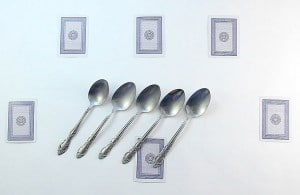

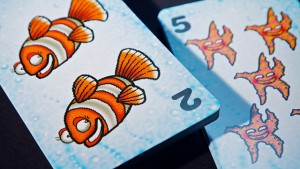
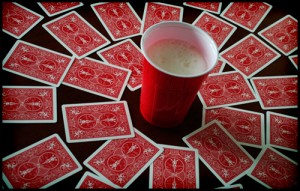
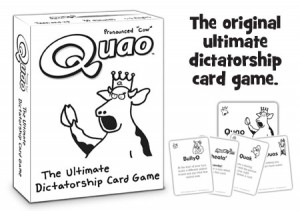


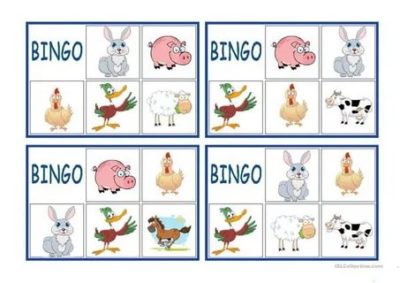
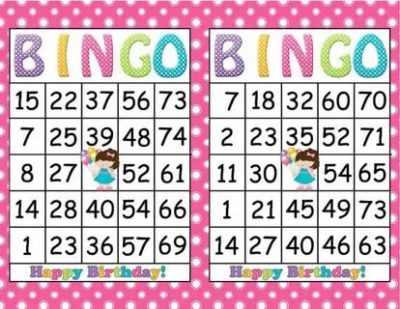
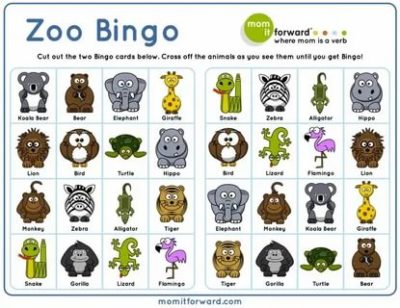

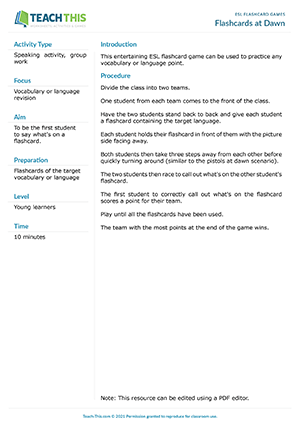

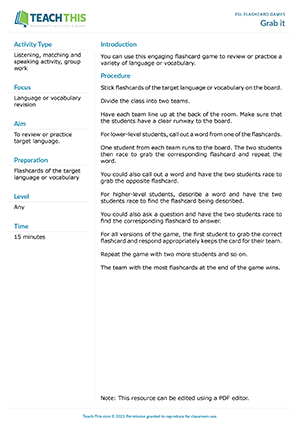
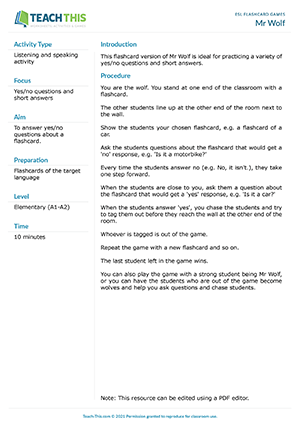
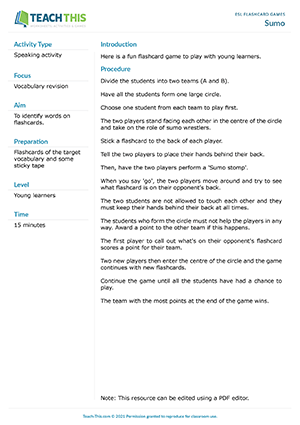
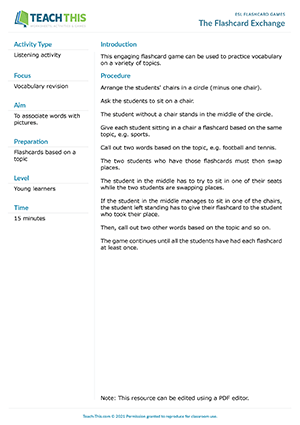
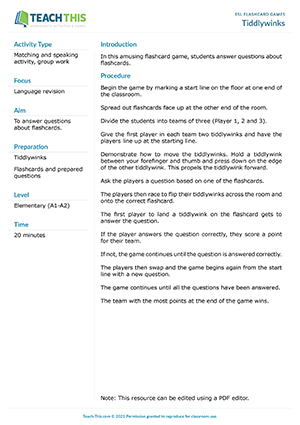
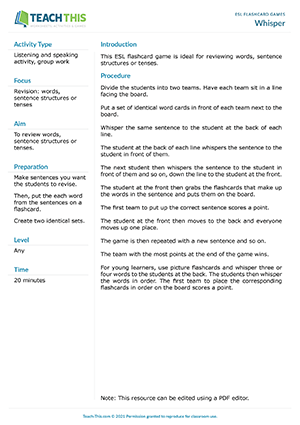



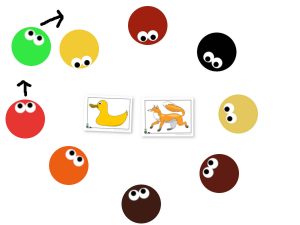








![Asking for directions – there be, prepositions, directions [map / boardgame + 4 tasks + 24 cards + 4 suggestions for the use of the ws] ((4 pages)) ***editable](https://static.islcollective.com/storage/preview/201102/296x234/asking-for-directions-there-be-prepositions-direct-fun-activities-games-games-grammar-drills-oneonone_3294_1.jpg)








